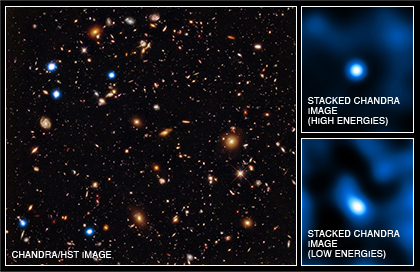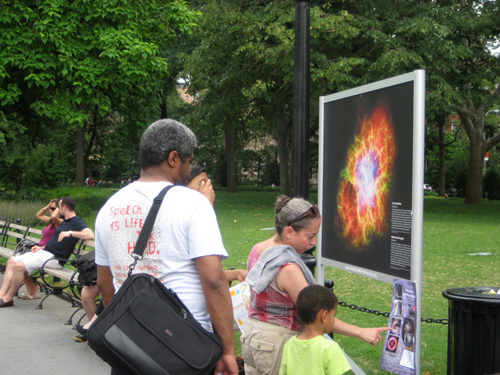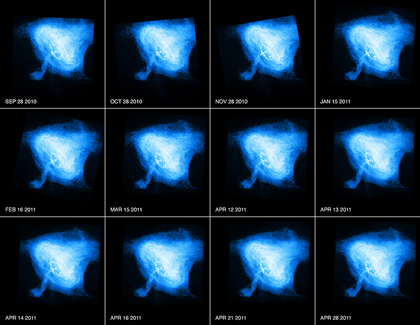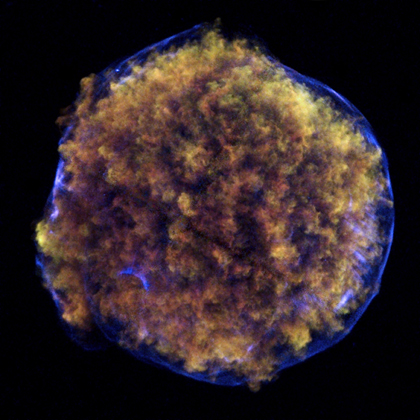NASA's Chandra Finds Massive Black Holes Common in Early Universe
Submitted by chandra on Wed, 2011-06-15 09:00Correction: After this paper (Treister et al. 2011) was published and publicized a problem was discovered with the background subtraction used. Analysis by several groups, including the Treister et al. team, plus Willott (2011) and Cowie et al. (2012), shows that a significant detection of AGN (growing black holes) in the early universe can no longer be claimed.
Editor's Note: Honest errors such as this are part of the scientific process, especially on the frontiers of discovery. To quote Nobel laureate Frank Wilczek, "If you don't make mistakes, you're not working on hard enough problems. And that's a big mistake."
References:
Cowie, L. et al. 2012, ApJ, in press
http://lanl.arxiv.org/abs/1110.3326
Treister, E. et al. 2011, Nature, 474, 356
http://lanl.arxiv.org/abs/1106.3079
Willott, C. 2011, ApJ, 742, L8
http://lanl.arxiv.org/abs/1110.4118

This composite image from NASA's Chandra X-ray Observatory and Hubble Space Telescope (HST) combines the deepest X-ray, optical and infrared views of the sky. Using these images, astronomers have obtained the first direct evidence that black holes are common in the early Universe and shown that very young black holes grew more aggressively than previously thought.







